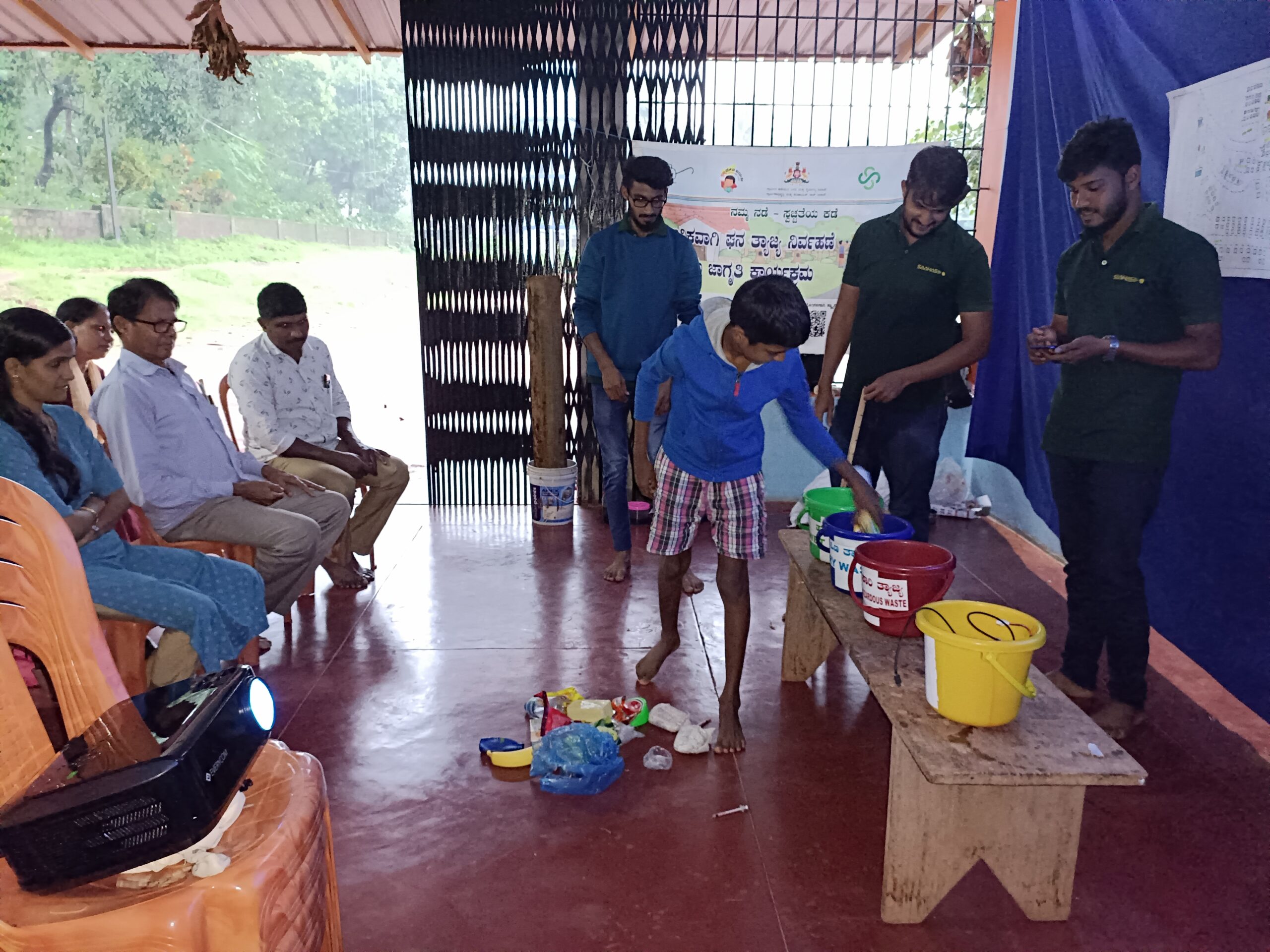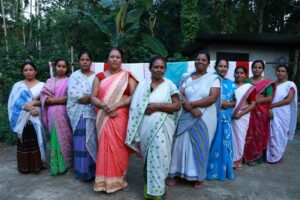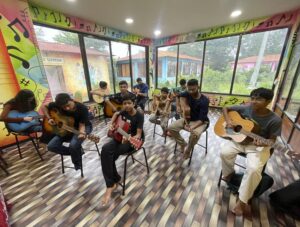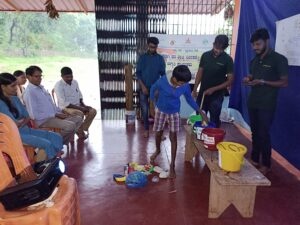In many villages, waste doesn’t vanish; it is dumped in fields, burnt in backyards, or left to rot. What could be compost for farms or recyclables for markets is lost, turning into pollution and risk. And the question is stark: are we waiting for rural waste to grow into an unmanageable crisis, like in our cities? The opportunity lies in acting now, building systems of resource recovery before it is too late.
Pilots in Small Clusters (2017–2019)
It was with this question in mind that Saahas began its first rural experiments between 2017 and 2019, working in 25 Gram Panchayats across Udupi and Dakshina Kannada. These pilots were deliberately designed as small clusters, focused not on big infrastructure but on testing fundamentals. Could rural households consistently segregate their waste? Could panchayats manage door-to-door collection? Could simple composting units and dry waste sheds function effectively?
Through close engagement with communities and local officials, a basic model began to emerge. Waste was segregated at source into wet, dry, and domestic hazardous categories. The collection was organised at the household level and transported regularly. Wet waste was composted locally, dry waste was channelled to Dry Waste Collection Centres (DWCCs), and hazardous waste was stored safely. At the final stage, Material Recovery Facilities (MRFs) provided an outlet to sort, aggregate, and dispatch recyclables to markets, low-value plastics to co-processing, and only the unavoidable rejects to landfills. These modest beginnings proved that rural waste systems could indeed function when designed with community participation.
The Opportunity and the Risk (2019–2020)
In 2019, the Government of Karnataka announced a significant investment: the construction of four large MRFs in Udupi, Dakshina Kannada, Ramanagara, and Ballari.
The announcement created a major opportunity, but also exposed a critical risk. The government’s focus was on the back-end of waste management, building infrastructure to process waste once it was collected. However, the front-end household segregation, door-to-door collection, transportation, and community ownership remained weak or non-existent.
Across many villages, waste was still dumped in fields, burnt in the open, or left unmanaged. Collection centres often stood unused. Panchayats had no clear accountability for the last mile. Crucially, there were no forward linkages to recyclers or co-processing facilities. Without strengthening these front-end systems, the newly built MRFs risked lying idle or receiving only mixed, unusable waste.
The Response: Launching Paripurna (2021)
To bridge this gap, Saahas, with support from the HCL Foundation, launched the Paripurna project in 2021. The project began across 145 Gram Panchayats in four blocks, all directly linked to the new MRFs. Its vision was to make rural waste systems both functional and sustainable. This meant:
- Strengthening front-end systems of segregation, collection, transportation, and awareness.
- Training and empowering frontline workers, sanitation staff, SHG members, and women drivers.
- Building ownership among Gram Panchayats and local leaders.
- Ensuring that government investments in the back-end (MRFs) were fully operationalised.
Paripurna was designed as a systemic intervention, one that closed the gap between community practices and district-level infrastructure.
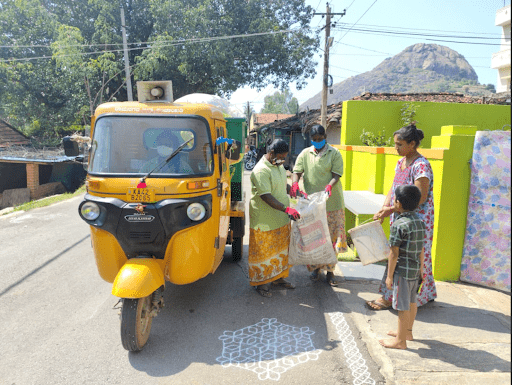
The First Breakthrough: Udupi MRF (2022)
By mid-2022, the Udupi MRF was operational. Saahas worked with the district administration to link 42 Gram Panchayats to the facility. For the first time, a complete rural waste chain was in motion:
- Front-end: households segregated waste, SHGs managed door-to-door collection, and transport routes were mapped.
- Back-end: waste arrived at the MRF, was sorted and baled, and moved onwards to recyclers and co-processors.
The Udupi MRF quickly became a demonstration model. Visitors from other districts could see how waste systems worked when the front-end and back-end were connected.
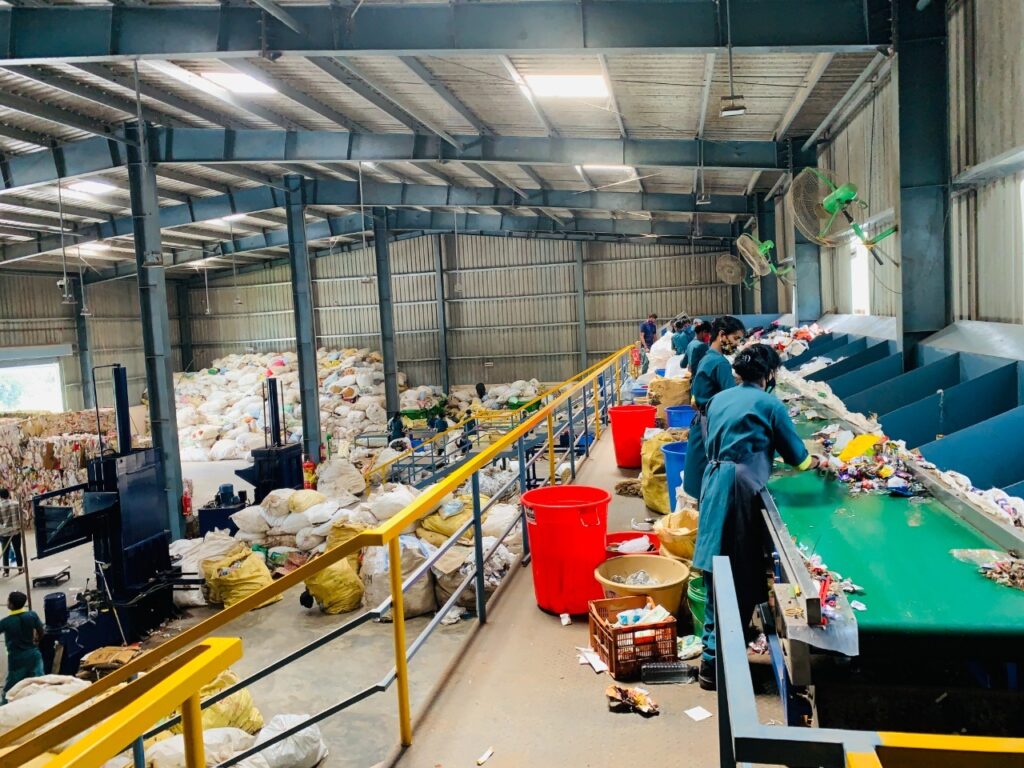
Ripples of Change: Scaling to Other Districts (2022–2023)
Encouraged by Udupi’s success, Dakshina Kannada scaled the Paripurna model in 2022. The Tenka Yedapadavu MRF and its 51-GP network became a district-level showcase. The District CEO extended linkages to all GPs, pooled financial resources at the Taluk level, and created a sustainable, cluster-based SWM system. A dedicated task force was set up to monitor performance and drive innovation.
The district mapped all 223 Gram Panchayats to four MRFs, becoming the first district in Karnataka to achieve 100% rural dry waste coverage.
By 2023, Ramanagara had also adopted the model, linking their GPs to newly established MRFs. This marked a shift from scattered experiments to a district-wide systems approach to waste management.
Building Scale and Accountability
Several innovations allowed Paripurna to grow sustainably:
- MRFs as anchors → offering a reliable outlet to process non-recyclable and low-value waste, moving it out of GP sheds into safe recovery or disposal pathways.
- Community-led collection → SHGs under GPLFs managed waste collection, embedding ownership and accountability at the grassroots.
- Capacity building → Gram Panchayat officials, SHG members, ASHA workers, and Anganwadi staff were trained, creating a broad network of local champions.
- Financial sustainability → user-fee collection mechanisms were strengthened, reducing dependence on external support.
Together, these elements gave the model credibility with state officials and opened the door for replication across Karnataka.
Impact at Scale (2022–24)
In just two years, Paripurna achieved measurable results:
- 22,200 MT of waste managed across 3 districts.
17,000 MT wet waste composted |2,450 MT dry waste recycled.|400 MT plastics co-processed |250 MT sanitary waste safely managed. - ₹1.1 crore generated from dry waste sales and ₹1.67 crore mobilised through user fees.
- 21 livelihoods enhanced, including women drivers and SHG members.
- 25+ professionals trained to manage rural SWM systems.
- 12.7 lakh people benefitted from cleaner villages and functioning waste services.
Why Paripurna Matters? The Key Lesson
The experience of Paripurna shows that infrastructure is vital in rural solid waste management facilities like MRFs, which provide the backbone for processing, recovery, and safe disposal. However, infrastructure alone is not enough.
For these investments to deliver, they must be supported by strong front-end systems: behaviour change in households, segregation at source, reliable door-to-door collection, and accountable local governance, plus localised infrastructure for storage before it reaches the MRF.
When the front-end and back-end are connected, the system works. Paripurna demonstrated that rural waste management can be both infrastructure-driven and community-owned, creating a model that is sustainable, scalable, and replicable.
A Call to Responsibility
Paripurna has shown that rural waste management can work when infrastructure and community systems move together. But beyond the tonnes of waste managed and villages cleaned, the project raises deeper questions.
Is this what we mean by responsible citizenship: households taking charge of segregation, communities paying user fees, SHGs leading collection?
Is this what we mean by responsive governance, panchayats building ownership, district officials pooling resources, state departments ensuring infrastructure does not go to waste?
Because in the end, solid waste management is not just about waste. It is about responsibility, accountability, and ownership shared between citizens and the state.

